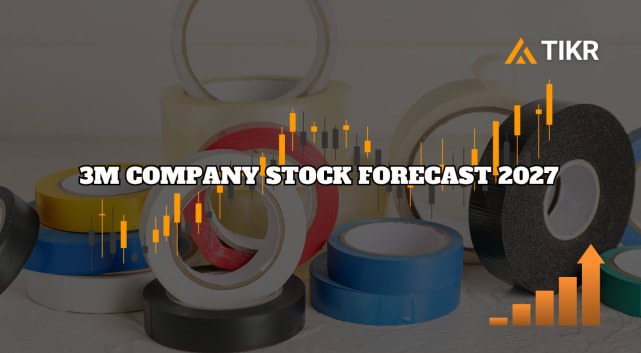Most investors think valuing a stock means creating an Excel spreadsheet, building a discounted cash flow model, and spending hours tweaking assumptions. But in reality, you can get a reliable first impression of a company’s value in less than a minute, if you know where to look.
Fast valuations don’t replace deep analysis, but they do help you focus your time on what matters. Instead of analyzing 50 companies at random, you can use a 30-second framework to identify the handful truly worth a closer look. And when all the data you need, like valuation ratios, financials, cash flow, returns, and peer comparisons, live inside one platform, that process becomes effortless.
This is the edge investors get with TIKR as it condenses institutional-quality data into an intuitive format, letting investors move from “idea” to “insight” almost instantly. Whether you’re screening for undervalued dividend payers or fast-growing tech leaders, TIKR gives you everything you need to size up a stock and decide whether it deserves your attention in under 30 seconds.
Why Fast Valuations Matter
The best investors don’t start with ten-tab spreadsheets, instead, they start with direction. Before you dive into detailed analysis, you want a quick sense of whether a company’s current valuation makes sense relative to its history, its peers, and its fundamentals. That 30-second snapshot can tell you if the stock belongs in your research queue or if it’s one to skip.
The challenge is that most retail investors scatter their data across multiple sources. You might check Yahoo Finance for earnings, Morningstar for ratios, and EDGAR for filings, wasting valuable time and introducing inconsistencies. That’s where TIKR simplifies the process. It brings together valuations, financials, returns, cash flow, insider trades, and fund ownership, all synced and standardized.
By using one data source instead of five, you can focus on what actually matters: how the market is valuing the business today compared with how it’s valued similar companies and its own past. A faster process doesn’t just save time, it dramatically improves focus and consistency, helping you filter out noise before you commit to deeper work.
Step 1: Search for the Company

Start by logging into the TIKR Terminal and typing a company name or ticker into the search bar. You’ll land on that company’s overview page, which displays its current price, market cap, trading volume, and a concise set of valuation metrics at the top. Within seconds, you’re seeing the same summary data institutional analysts use when screening for ideas.
Value any stock in less than 60 seconds with TIKR’s new Valuation Model (It’s free) >>>
If you’re still in the discovery stage, TIKR’s platform makes it easy to explore companies by sector, region, or theme. Whether you’re researching U.S. tech giants or emerging-market industrials, every entry uses consistent data fields, meaning regional accounting quirks don’t distort your comparisons.
This first step may seem simple, but it’s critical. You’re creating a single, standardized starting point that avoids one of the most common traps in quick valuation: using mismatched or outdated figures. By beginning in TIKR, you know every metric, from P/E to free cash flow, as it comes from the same underlying database.
Step 2: Get a Financial Snapshot

Next, click into the Valuation tab, as this is where the real speed advantage kicks in. Within one view, TIKR shows trailing and forward P/E, EV/EBITDA, P/B, and Free Cash Flow Yield, along with multi-year charts showing how each metric has evolved. Those visuals instantly reveal whether today’s price is above, below, or right in line with historical norms.
Here’s what to look for. If P/E and EV/EBITDA are significantly below five-year averages, yet margins, returns, and revenue trends remain healthy, the stock may be undervalued. Conversely, if the multiples are elevated and profitability is flat or declining, that premium probably reflects sentiment rather than fundamentals. TIKR also displays both trailing and forward numbers, letting you see if analyst forecasts justify the price, a small detail that makes a big difference.
What makes this so powerful is that it takes seconds. Instead of building a model to estimate fair value, you’re using time-tested valuation ratios with real context. The combination of current numbers, historical averages, and visual charts allows you to judge not just what the valuation is, but why it might have changed, whether due to earnings cycles, margin compression, or simple investor enthusiasm.
Get the most up to date financial snapshots of 100K+ stocks with TIKR (It’s free) >>>
Step 3: Compare Against Peers

The valuation of a stock doesn’t exist in a vacuum. A stock can look cheap until you realize the entire sector trades at the same level, or expensive until you notice it’s the only player with strong returns and low debt. That’s why comparing against peers is the essential next step.
In TIKR’s Competitors tab, you’ll find the company listed alongside its closest competitors, automatically grouped by sector and market cap. Each peer’s valuation multiples, growth rates, profitability, and returns are displayed in a single table. This saves hours of manual lookup and ensures you’re not comparing a niche player to a global giant.
When scanning the peer view, focus on whether the company’s discount or premium to the group makes sense. A 20% discount could signal market doubts about the durability of growth, while a 20% premium might reflect exceptional returns on capital or a stronger balance sheet. The peer data helps you determine whether the market is rewarding or penalizing the business for reasons that hold up to scrutiny. In less than 30 seconds, you’ve transformed raw numbers into meaningful relative value insight.
Run a competitor analysis on TIKR for the top stocks in your portfolio (It’s free) >>>
Step 4: Cross-Check Cash Flow and Returns
Even the best-looking valuation can be misleading if the business isn’t producing real cash. That’s why a quick check of cash flow and return metrics is essential before forming any judgment.
Navigate to the different tabs under Valuation where you can see multi-year trends like Free Cash Flow, Operating Cash Flow, Return on Equity (ROE), Return on Invested Capital (ROIC), and Net Debt-to-EBITDA. This combination tells you whether profits are converting into cash and whether management is deploying capital effectively. A company with consistent FCF growth and stable ROIC above 10% usually deserves a market premium, and TIKR makes spotting that pattern immediate.
This is also the place to verify financial health. If returns are strong but debt has risen sharply, part of that performance may be leverage-driven. If FCF margins are declining even as revenue grows, the business might be reinvesting heavily or facing cost pressures. Seeing these patterns over time, right beside valuation metrics, helps you separate genuinely undervalued companies from those that are cheap for good reason.
Quickly find cash flow information on stocks with TIKR (It’s free) >>>
Step 5: Make it a Habit
Once you’ve gone through these steps a few times, you’ll be able to size up a stock faster than you can skim an earnings press release. The key is consistency. Using the same structure every time, overview, valuation history, peers, cash flow, returns, builds intuition and removes bias from your initial screen.
Think of it as your valuation triage process. Instead of guessing which stocks deserve deeper research, you’re basing that decision on measurable signals that take under a minute to review. If the quick scan looks promising, that’s when you can dig deeper into TIKR’s transcripts, ownership data, or analyst forecasts.
Over time, this habit compounds. The more you practice quick valuations, the better your instincts get. You’ll start to recognize when a multiple looks wrong for the quality of the business, or when market pessimism has swung too far. TIKR makes it effortless to get that “gut feel” grounded in hard data, not hunches.
A Quick Example: Applying the 30-Second Method
Imagine you’re curious about a semiconductor stock trading at 18x earnings. On TIKR, you open the Valuation > Valuation tab and notice that over the past five years, it has typically traded around 22x. In the Valuation > Financials view, FCF has risen steadily while debt remains low. Jumping to Valuation > Competitors, you see competitors trading closer to 25x despite similar margins. Within half a minute, you’ve identified a potential mispricing: the fundamentals justify a higher multiple, but the stock hasn’t caught up yet.
This isn’t a buy signal by itself, but it’s enough to flag the company for deeper analysis. Without TIKR, that insight might take hours to piece together. With it, you can screen dozens of names in the same time it takes to research one.
Find undervalued stocks in less than 60 seconds with TIKR’s new Valuation Model (It’s free) >>>
Why TIKR Makes it Effortless
Most “quick valuation” methods rely on surface-level data that lacks context. TIKR eliminates that limitation by combining institutional-grade depth with investor-friendly design. It automatically standardizes metrics across global markets, aligns peers correctly, and tracks valuation history over time, features that retail investors rarely have access to without expensive subscriptions.
Because all this data lives under one roof, you can move fluidly from high-level screening to detailed analysis without losing continuity. A valuation check becomes part of a natural workflow: spot the multiple, test it against history, verify quality, and, if it looks interesting, drill deeper into transcripts, insider trades, or fund ownership.
That’s what makes TIKR unique. It’s not just about speed, it’s about accuracy and completeness. In under a minute, you’re not guessing whether a stock is cheap or expensive; you’re seeing it through the same lens the professionals use.
TIKR Takeaway
TIKR gives investors the power to value any stock in seconds with context that actually matters. You can view valuation ratios, peer comparisons, cash flow trends, and returns, all side by side, then move straight into financials, ownership, and transcripts for deeper validation.
With coverage of more than 100,000 global stocks, the TIKR Terminal delivers institutional-quality research tools at a fraction of the cost. It’s built for investors who treat stocks as ownership stakes, not tickers, and those who want fast clarity without sacrificing depth.
When you can get a grounded, data-driven valuation snapshot in under 30 seconds, you’re no longer guessing what the market sees, you’re understanding why it’s priced the way it is.
FAQs
How accurate is a 30-second valuation?
A 30-second valuation isn’t meant to predict exact fair value or be 100% accurate; it’s intended as a screening tool. The goal in this timeframe is to quickly determine whether a stock warrants deeper research.
What’s the best metric to start with when looking at competitors?
If you only have one metric to start with when looking at competitors, begin by looking at Free Cash Flow Yield. This shows how efficiently a company turns revenue into real, spendable cash after investments.
How often should I check stock-based valuations?
Ideally, you should check stock-based valuations at least once per quarter, specifically around earnings season, when fresh financial data and analyst forecasts are updated.
Should I compare a company to its peers or the market?
Always start with peers when comparing a company and not the market itself. A software firm and an industrial manufacturer operate under different economic models and deserve different sets of reviews.
What makes TIKR faster than other sites when checking valuation?
TIKR is faster than other sites for valuation checks because it consolidates key data sources into a single interface, including valuation ratios, financial statements, ownership, returns, and historical context, all drawn from institutional-grade data.
AI Compounders With Massive Upside That Wall Street Is Overlooking
Everyone wants to cash in on AI. But while the crowd chases the obvious names benefiting from AI like NVIDIA, AMD, or Taiwan Semiconductor, the real opportunity may lie in the AI application layer, where a handful of compounders are quietly embedding AI into products people already use every day.
TIKR just released a new free report on 5 undervalued compounders that analysts believe could deliver years of outperformance as AI adoption accelerates.
Inside the report, you’ll find:
- Businesses already turning AI into revenue and earnings growth
- Stocks trading below fair value despite strong analyst forecasts
- Unique picks most investors haven’t even considered
If you want to catch the next wave of AI winners, this report is a must-read.
Click here to sign up for TIKR and get our full report on 5 undervalued compounders completely free.
Looking for New Opportunities?
- Discover which stocks billionaire investors are purchasing, so you can follow the smart money.
- Analyze stocks in as little as 5 minutes with TIKR’s all-in-one, easy-to-use platform.
- The more rocks you overturn… the more opportunities you’ll uncover. Search 100K+ global stocks, global top investor holdings, and more with TIKR.
Disclaimer:
Please note that the articles on TIKR are not intended to serve as investment or financial advice from TIKR or our content team, nor are they recommendations to buy or sell any stocks. We create our content based on TIKR Terminal’s investment data and analysts’ estimates. Our analysis might not include recent company news or important updates. TIKR has no position in any stocks mentioned. Thank you for reading, and happy investing!








